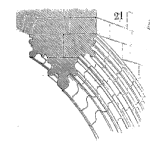
A common issue with solder, other than its ability to compliantly attach electronic packages to circuit boards, is its ability to fail with normal use.
Over time the normal thermal cycling causes the packages to move relative to the circuit board and the solder moves to accommodate. Each cycle the solder accumulates damage. Over time the number of cycles accumulates as does the damage. Eventually, the solder cracks and create an intermittent connection or disrupts the electron flow completely (open).
Using traditional models
Reliability engineers have long used the Coffin-Manson approach to model solder fatigue and time to failure. Norris-Landzberg refined the approach and accuracy of the C-F model. With approximately 50 years of experience, the approach consistently predicted solder fatigue with each new electronic package development.
Why do we need a new one?
As lead-free (SAC) solder increased in use (though mandated use) the need to refine the acceleration model became urgent. Pan, Clech, Pecht, Engelmeier and others studied and created alliterative models. Studies and models continued to need improvement with longer term studies and field data showing discrepancies.
The paper “An Acceleration Model for Lead-Free (SAC) Solder Joint Reliability under Thermal Cycling”, by Vasu Vasudevan and Xuejun Fan explores 17 sets of testing and field data and fits the modified Norris-Landzberg model. They find a reasonable fit with less than 6% error – and it is easy to use with accelerated testing. I like it.
Updated model
The model is
$$ \displaystyle\large AF=\frac{{{N}_{1}}}{{{N}_{2}}}={{\left( \frac{{{f}_{1}}}{{{f}_{2}}} \right)}^{-m}}{{\left( \frac{\Delta {{T}_{1}}}{\Delta {{T}_{2}}} \right)}^{-n}}\left( {{e}^{\frac{{{E}_{a}}}{k}\left( \frac{1}{{{T}_{\max ,1}}}-\frac{1}{{{T}_{\max ,2}}} \right)}} \right)$$
with m = 0.33, n=1.9, and Ea/k = 1414
The formula and fitted parameters are the same as the Norris-Landzberg equation for Sn-Pb solder. The authors go on to explain why and how useful the fitted formula works. It reads well.
I’ve been using the Pan, et. al. formula and parameters since my days with HP. Now I have a new formula. My prior work was conservative and no major decisions were wrong, which is good. The update and improvement of reliability tools is the primary reason to continue reading, studying, and working to learn every day.
Learning is part of being a professional reliability engineer.
 Ask a question or send along a comment.
Please login to view and use the contact form.
Ask a question or send along a comment.
Please login to view and use the contact form.
Perhaps this is a very old comment give that the referenced Vasudevan & Fan paper was presented/published in 2008. I have several problems with it but will focus on just two.
1. The text strongly implies that the data presented in the graphic of Figure 1 is based on the paired acceleration studies presented in Tables 1-4. Perhaps it is just sloppy charting but while the highest reported relative acceleration in those studies was 3.7, on the graph 6 points equal or exceed this value given their relationship to the Test AF axis. One point approaches AF = 14 which is absolutely nowhere in the data. This has the effect, visually, of: 1) showing better correlation of the “industry data” to the “new” model at low acceleration values and 2) the strong implication that the model fits well at much higher accelerations which this study did not include.
2. The acceleration ratios in the 18 sets of trial pairs cover a relatively small range. It’s little wonder that the authors fit a model to this data and then can show a great fit and, conversely, that Pan’s model does not. It really says nothing about this “new” model’s performance at higher test accelerations which are far more typical of solder joint reliability tests performed in many companies and industries.